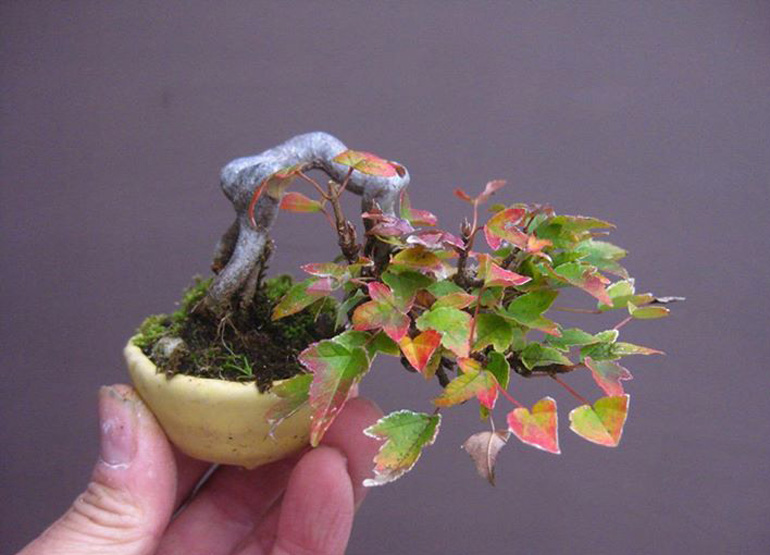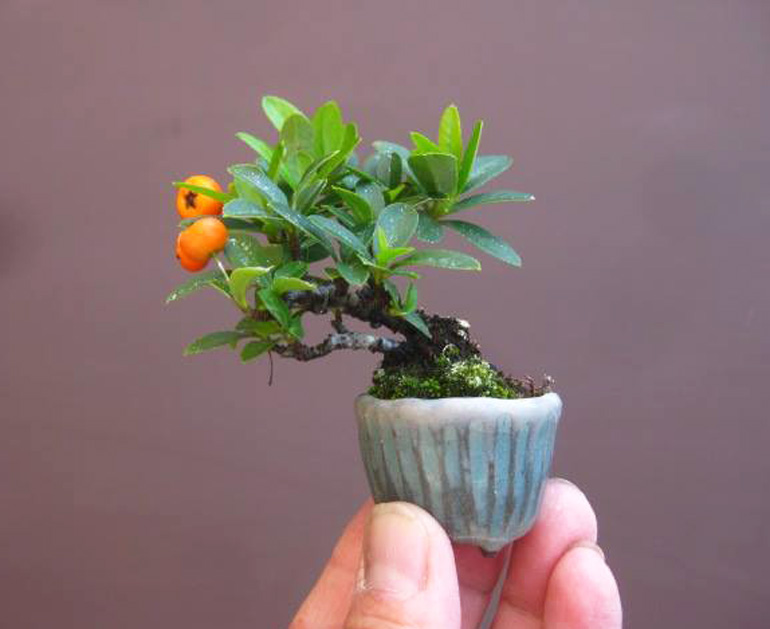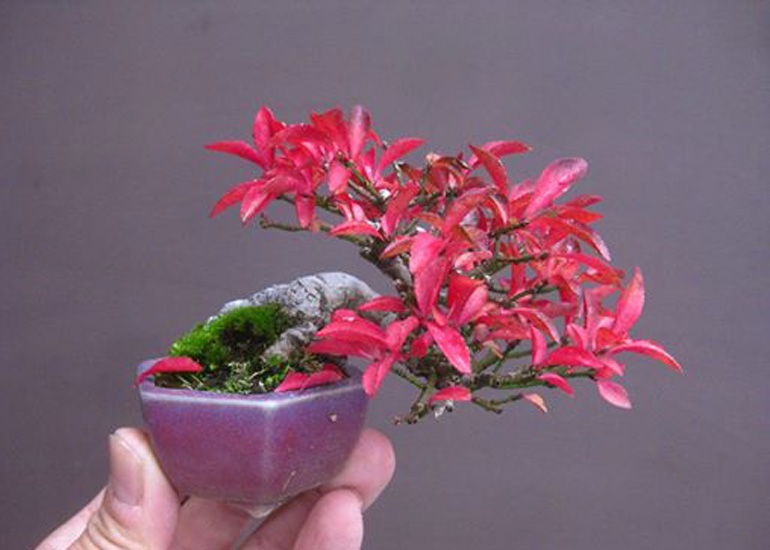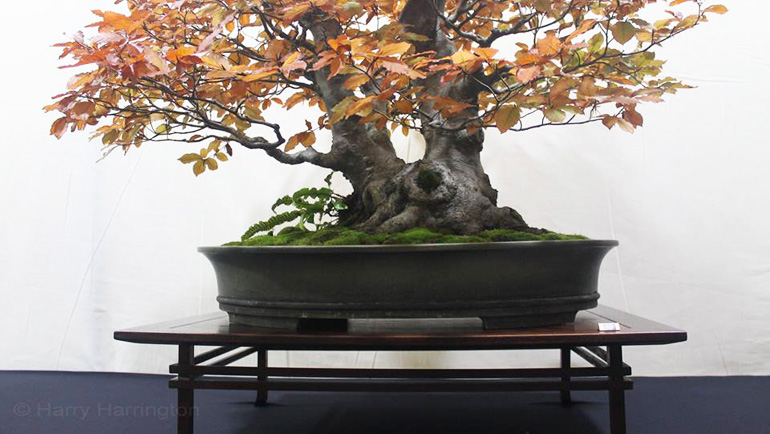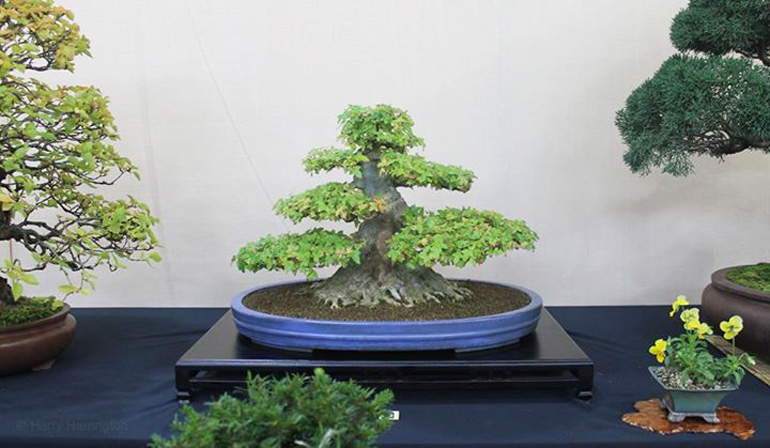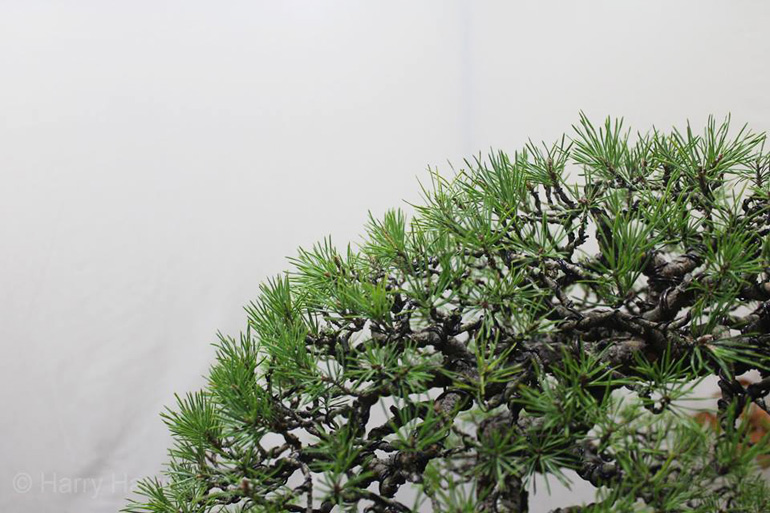As you can see, this Japanese white pine has a strong, well-tapered trunk and nice balanced open branching. Most imported Japanese white pine bonsai have been grafted onto Black pine stock.* But this one was grown from seed. It was just wired (in this photo) by Michael Hagedorn (Crataegus Bonsai.) It belongs to a client of Micheal's.
Still on vacation, so it’s archives again. This one is from January 2013 with some value added.
The Japanese white pine (Pinus parviflora) is one of the world’s emblematic bonsai. In Japan, it and the Japanese black pine are the species most associated with the art of bonsai.
The Latin name for Japanese white pine is Pinus parviflora. The Japanese name is Goyo Matsu. Matsu is pine and Goyo means ‘five-needle’ (all white pines have five needles to a cluster). In fact, you will sometimes hear the name Japanese five needle pine used in place of Japanese white pine.
Root-on-rock Japanese white pines are not at all unusual. The more I look at this one, the more I am struck with just how well-balanced and tranquil it seems. This is to take nothing away from its natural and wild side. The photo was taken in Japan at the 2011 Sakufu-ten exhibition by Jonas Dupuich (Bonsai Tonight).
Fluidity and muscle combined make for a very strong bonsai. To my eyes this is a near perfect informal upright Japanese white pine bonsai. It's from Mario Komsta's facebook photos. My guess is that it originated in Japan and that Mario has been refining it. He calls it Goyo Kundo and though Goyo matsu is the Japanese name for Japanese white pine (see above). I couldn't find anything about Kundo in my dictionary or online, so your guess is as good as mine.
The famous 'Peace Tree.' I like the way this photo captures the lines and color in this famous Japanese white pine's bark. That's the upside. The downside is that there's no way to tell just how magnificently large and powerful this tree is. It resides at the National Bonsai and Penjing Museum. We've featured it before. The photo is from Michael Bonsai.
Million dollar bonsai. Here's a mind-bending Japanese white pine that we featured back in 2011 with our original caption: This magnificent White pine was sold at the 11th Asia-Pacific Bonsai and Suiseki Convention & Exhibition in at Takamatsu, Kagawa, Japan, earlier this month. As you can see, the asking price was 100,000,000 yen (that’s close to 1.3 million dollars). I don’t know what the actual sales price was. Photo borrowed from Bonsai Tonight.
This flowing bunjin Japanese white pine provides a little contrast to the husky tres above. It's from our Masters' Series Pines: Growing and Styling Japanese Black and White Pines.
* Japanese white pine bonsai are usually grafted onto Japanese black pine stock, and all, or almost all of these grafts come from Japan. The reason for grafting is because black pines are more vigorous than the more delicate and finicky Japanese whites. This is especially true of White pine cultivars, many of which simply won’t thrive on their own roots (here’s more if you are interested).
25% off kilo rolls Bonsai Aesthetics Wire

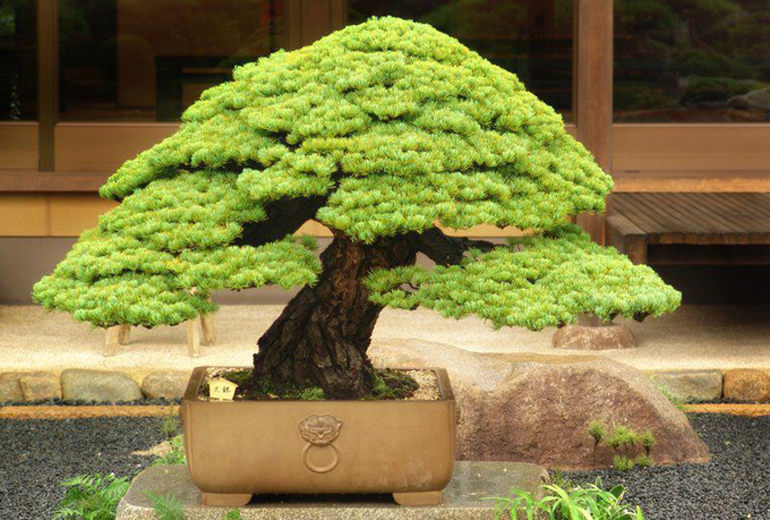 This powerful
This powerful 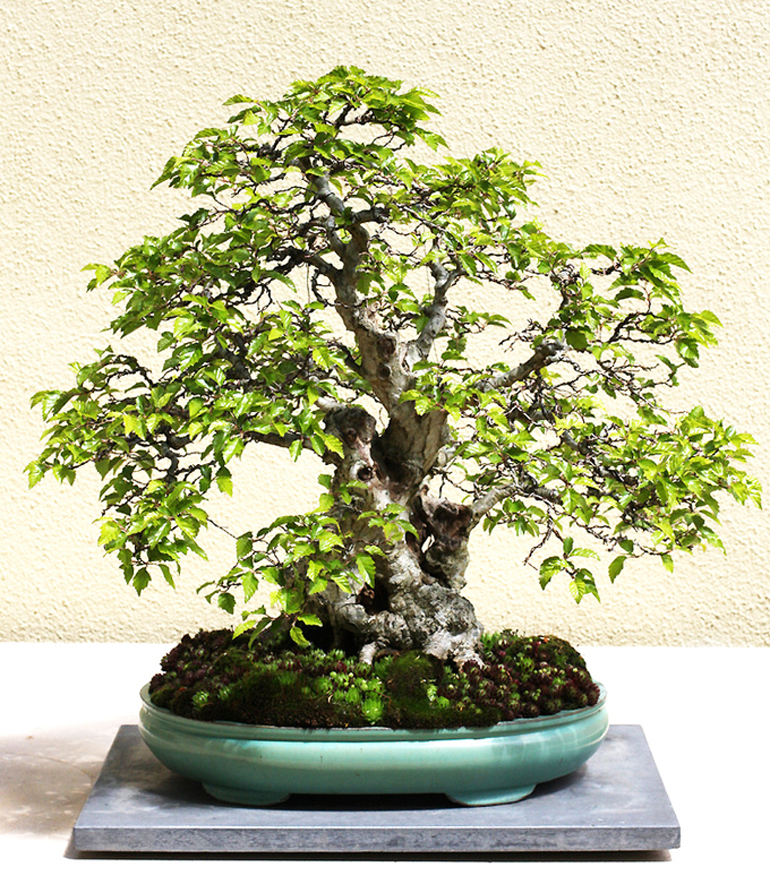 This wild looking Hornbeam that used to belong to Dan Robinson and now resides at the
This wild looking Hornbeam that used to belong to Dan Robinson and now resides at the 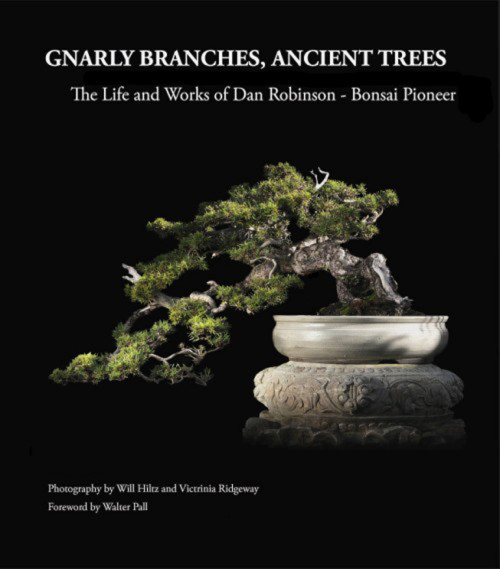
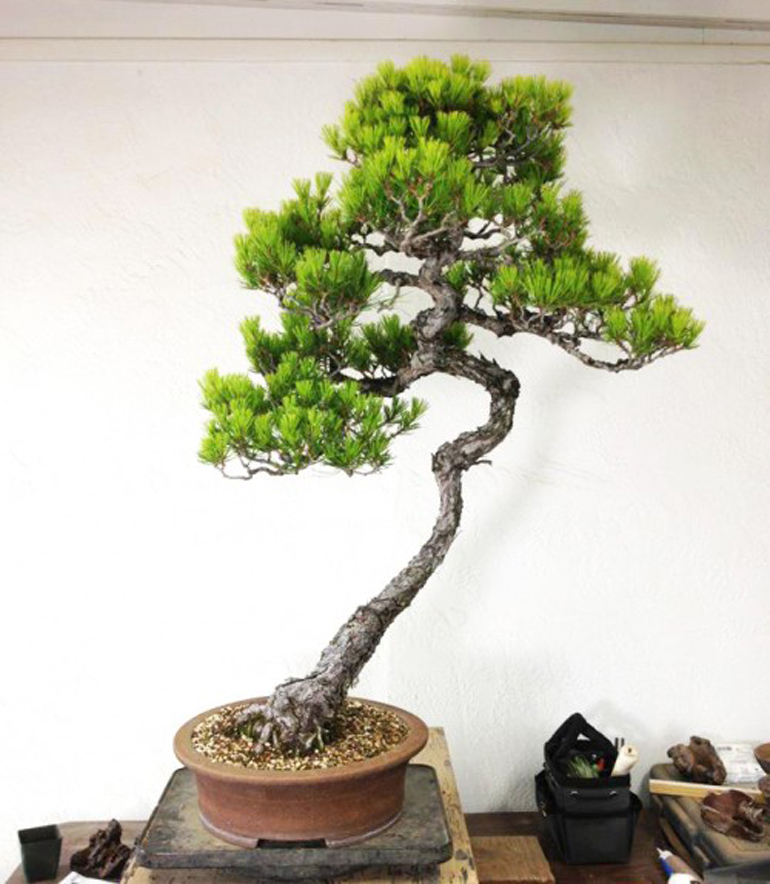 This sweet bunjin red pine was posted
This sweet bunjin red pine was posted  A little closer to home. This old Trident maple clump with it rugged nebari is from Quebec's
A little closer to home. This old Trident maple clump with it rugged nebari is from Quebec's 

 This
This 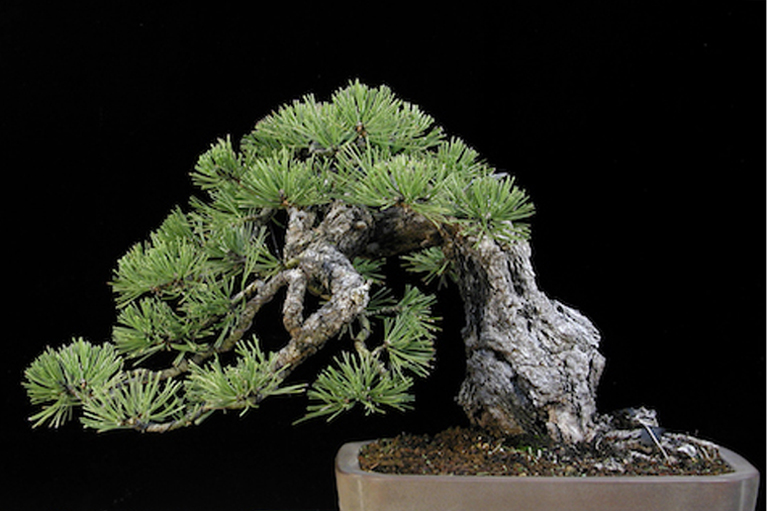 Though
Though 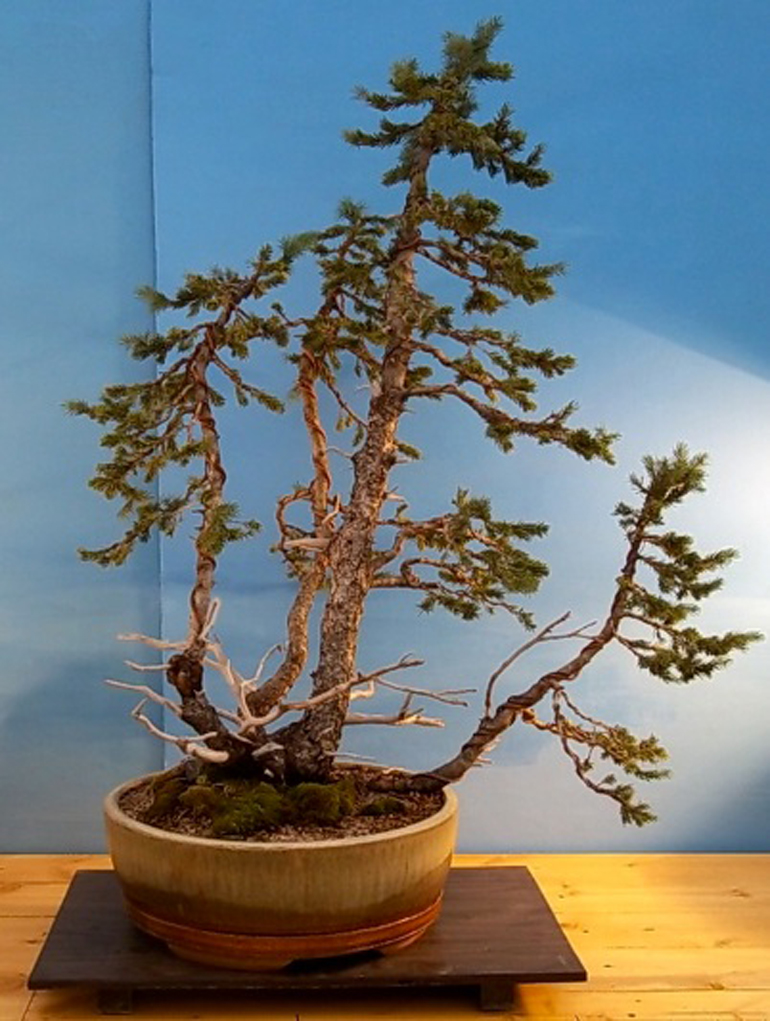
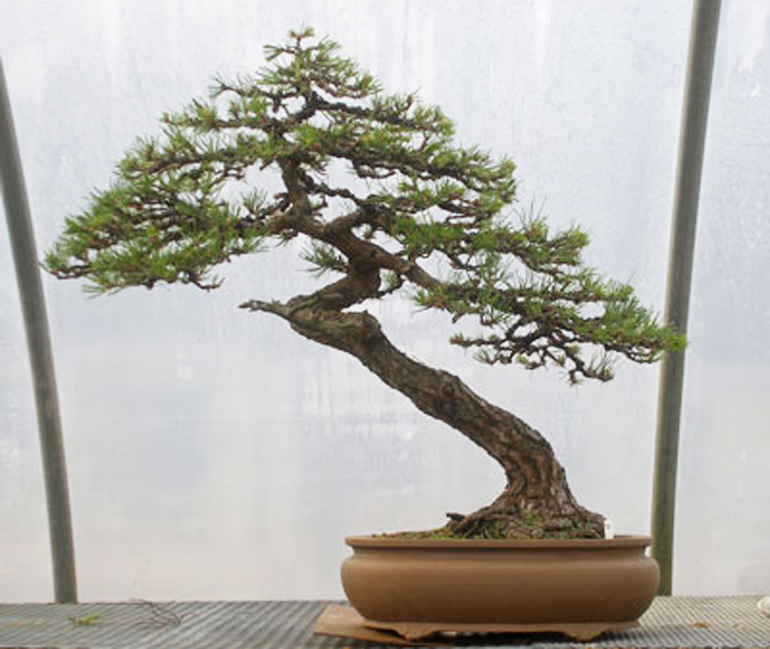 This elegant, fluid
This elegant, fluid 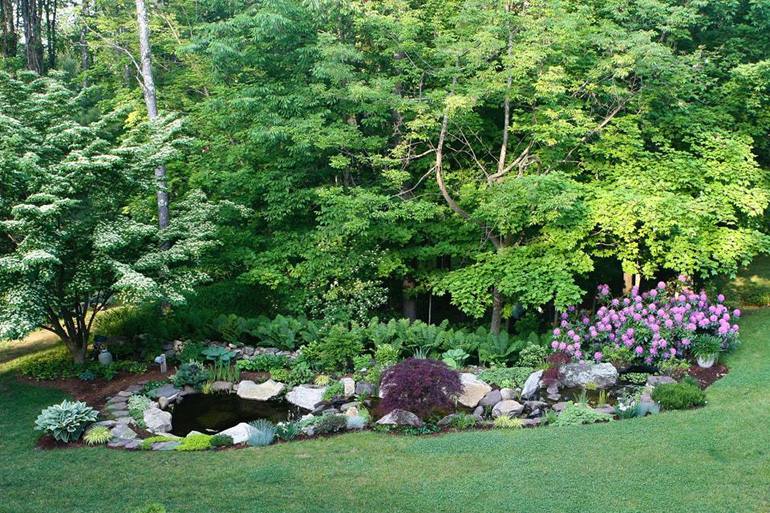 Okay, this waterfall garden is clearly not a bonsai. But any beautiful Japanese influenced garden is a close cousin. It belongs to
Okay, this waterfall garden is clearly not a bonsai. But any beautiful Japanese influenced garden is a close cousin. It belongs to 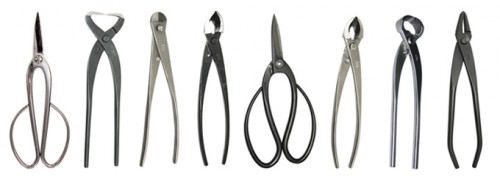
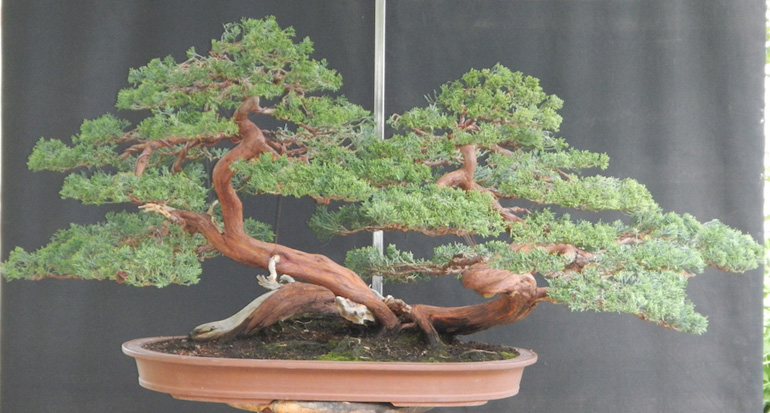
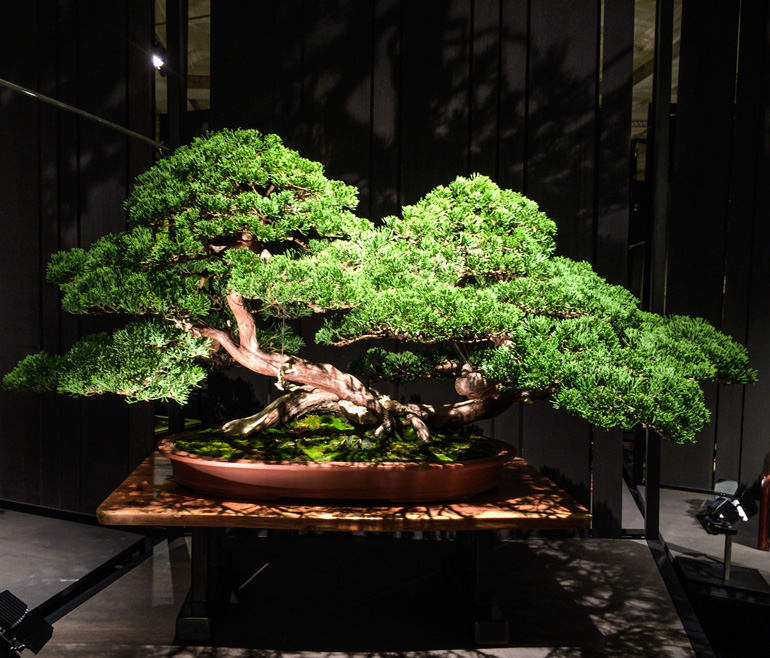
 2009. This is the oldest photo of the tree Michael sent. He bought it in the mid-eighties, so plenty of time had elapsed by the time this photo was taken.
2009. This is the oldest photo of the tree Michael sent. He bought it in the mid-eighties, so plenty of time had elapsed by the time this photo was taken.

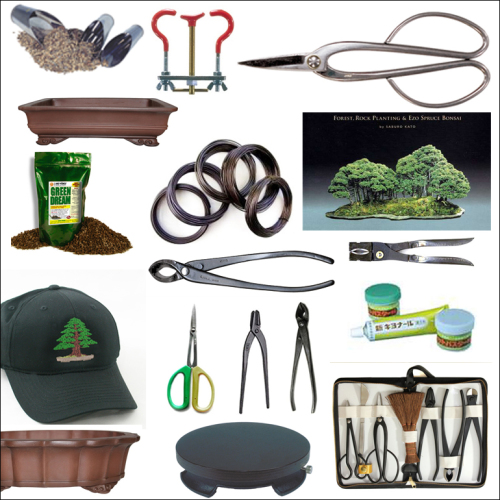

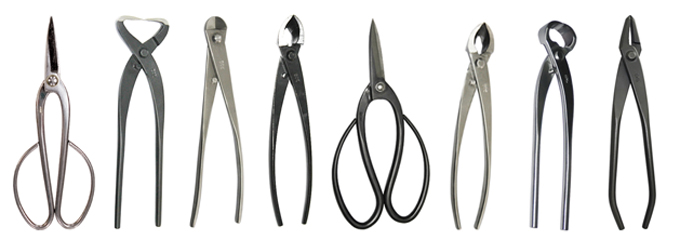


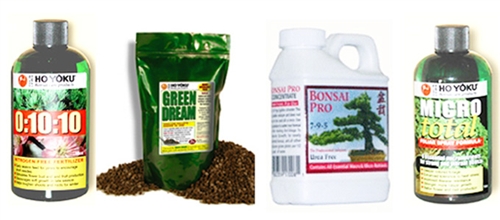

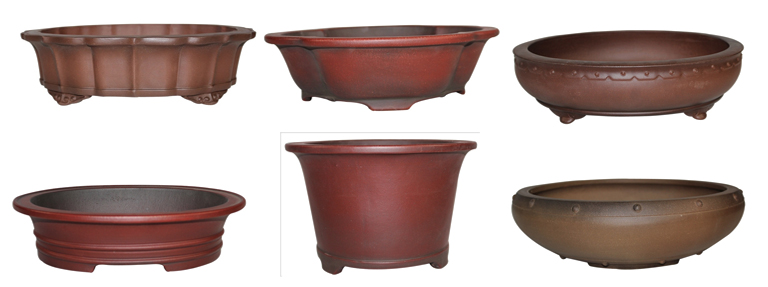
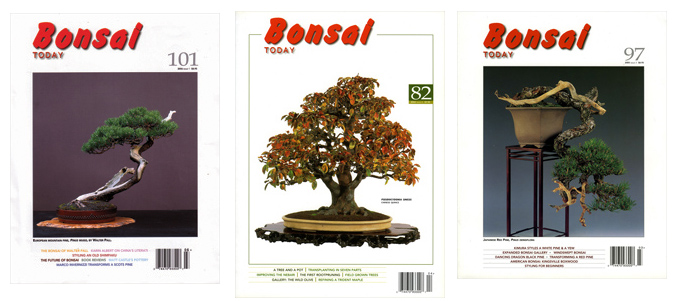

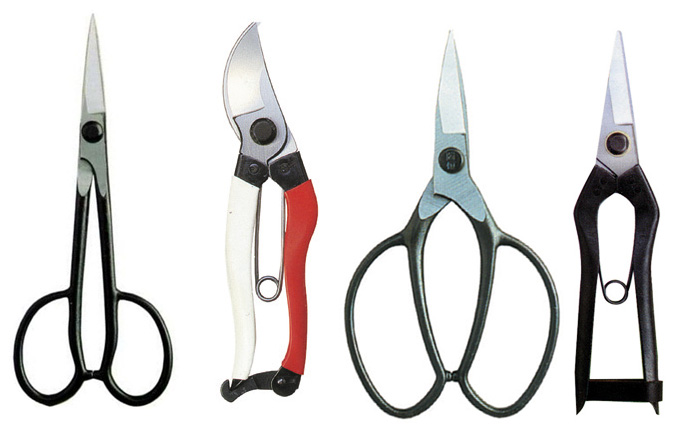

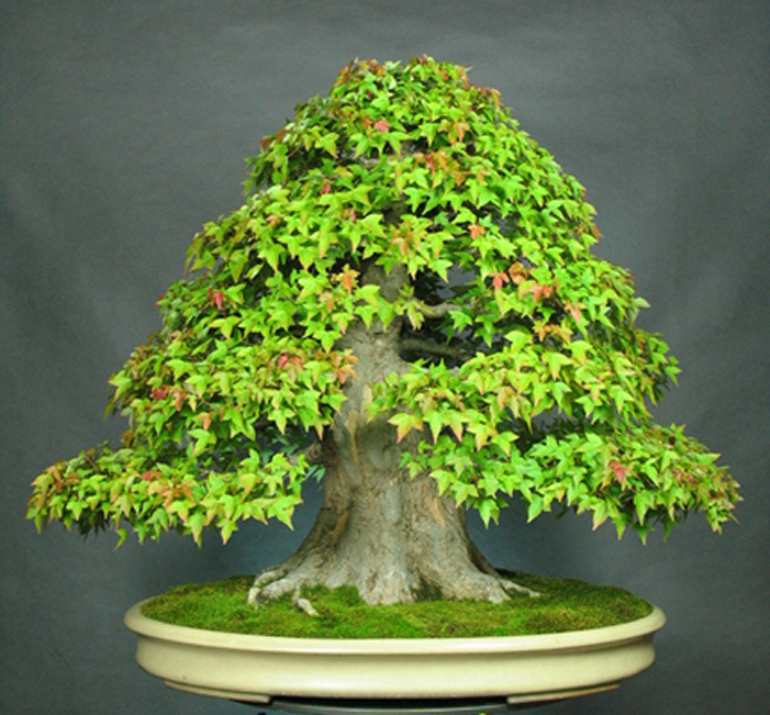

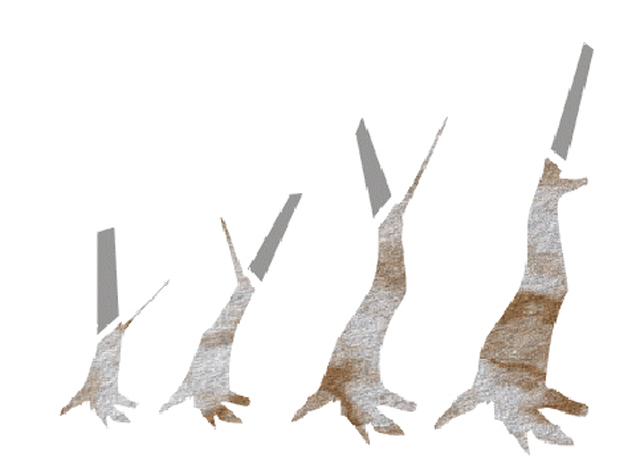 These simple
These simple 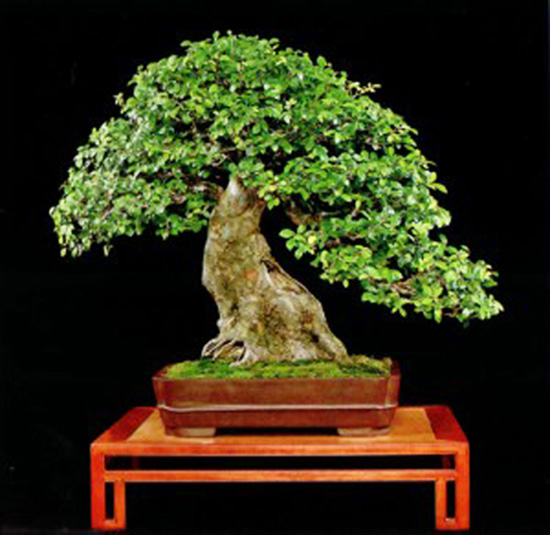

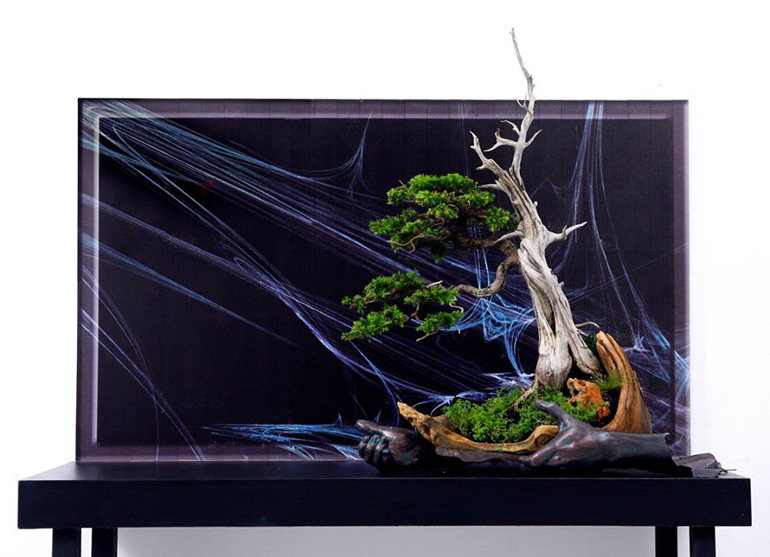 Halloween? The show was in October (last year). At first glance you might just see the tree and the cobwebs and miss the hands clutching (persenting?) the sculpted wooden pot. This photo and the one just below are from
Halloween? The show was in October (last year). At first glance you might just see the tree and the cobwebs and miss the hands clutching (persenting?) the sculpted wooden pot. This photo and the one just below are from 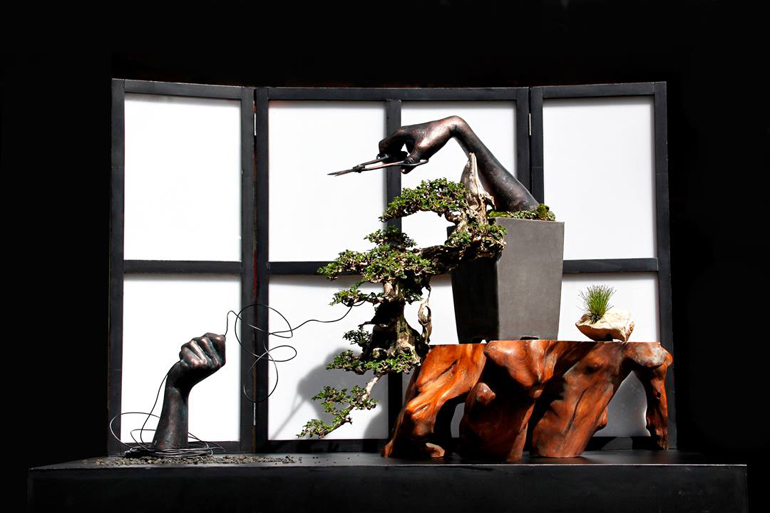 Halloween again (though I suspect there’s much more going on here than that). There’s something about those ‘severed’ arms that’s just a little ominous. Is this where the recent ‘Black Scissors’ rage started?
Halloween again (though I suspect there’s much more going on here than that). There’s something about those ‘severed’ arms that’s just a little ominous. Is this where the recent ‘Black Scissors’ rage started?
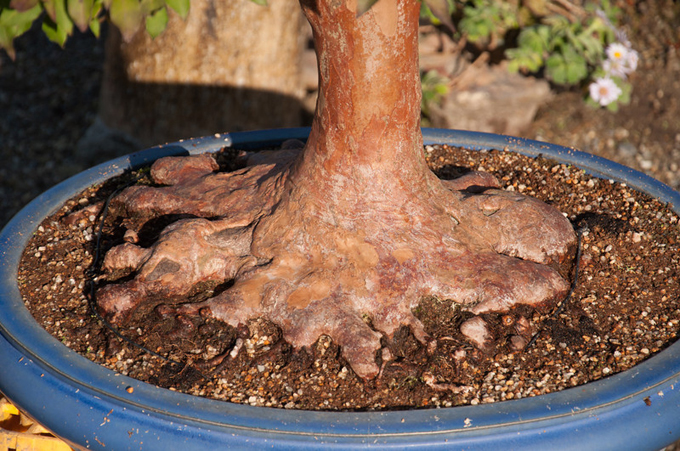
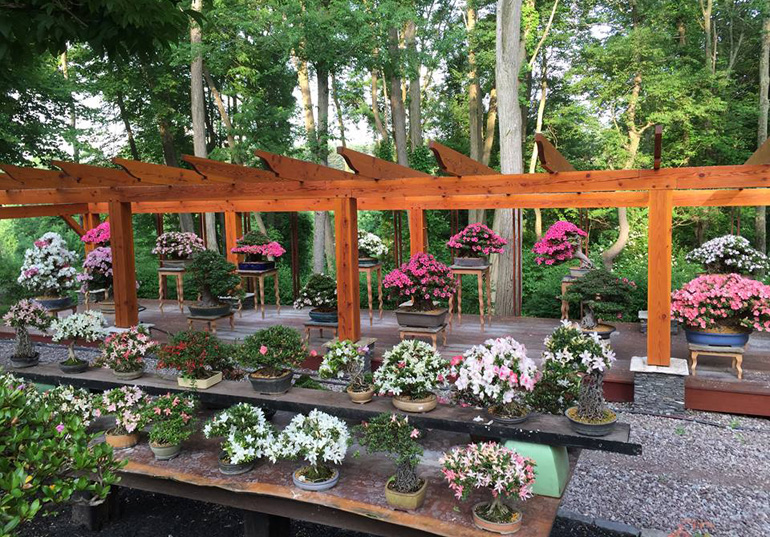
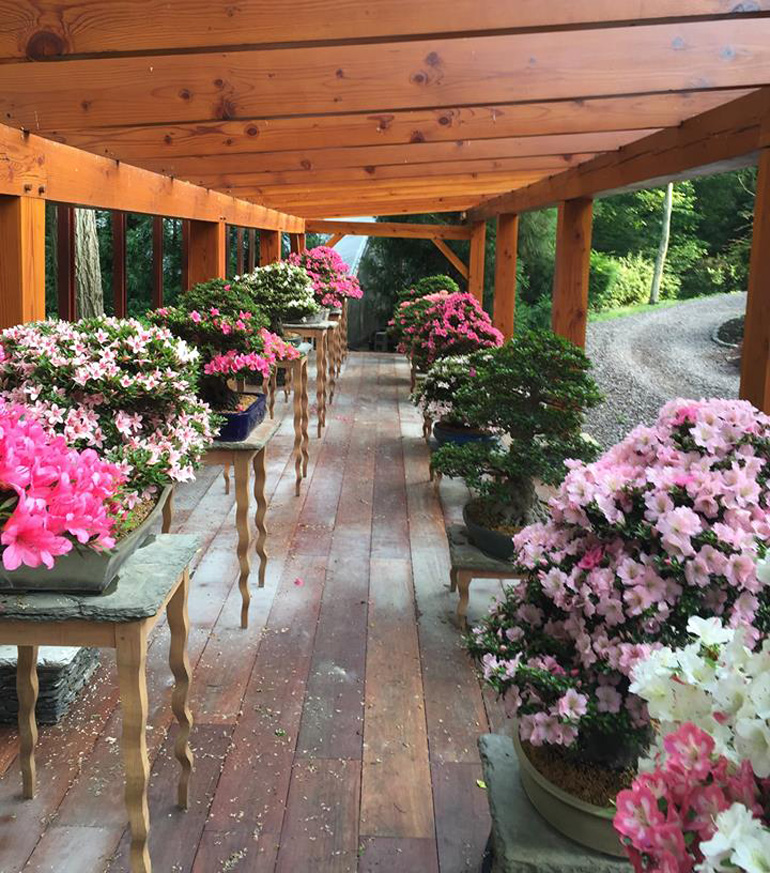
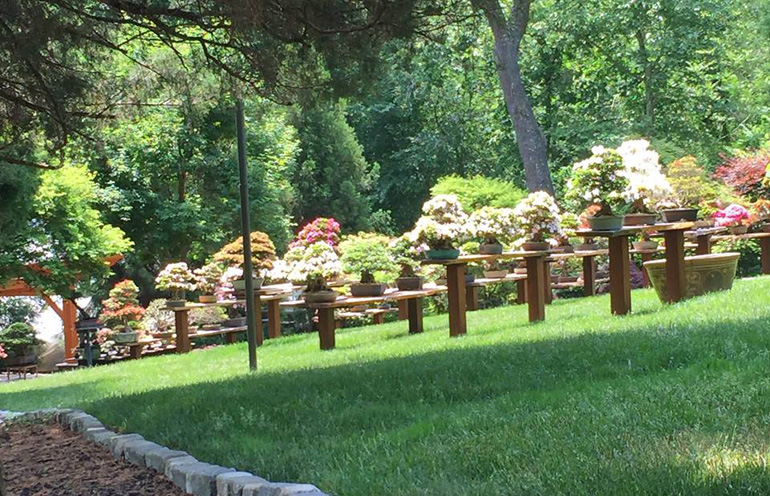
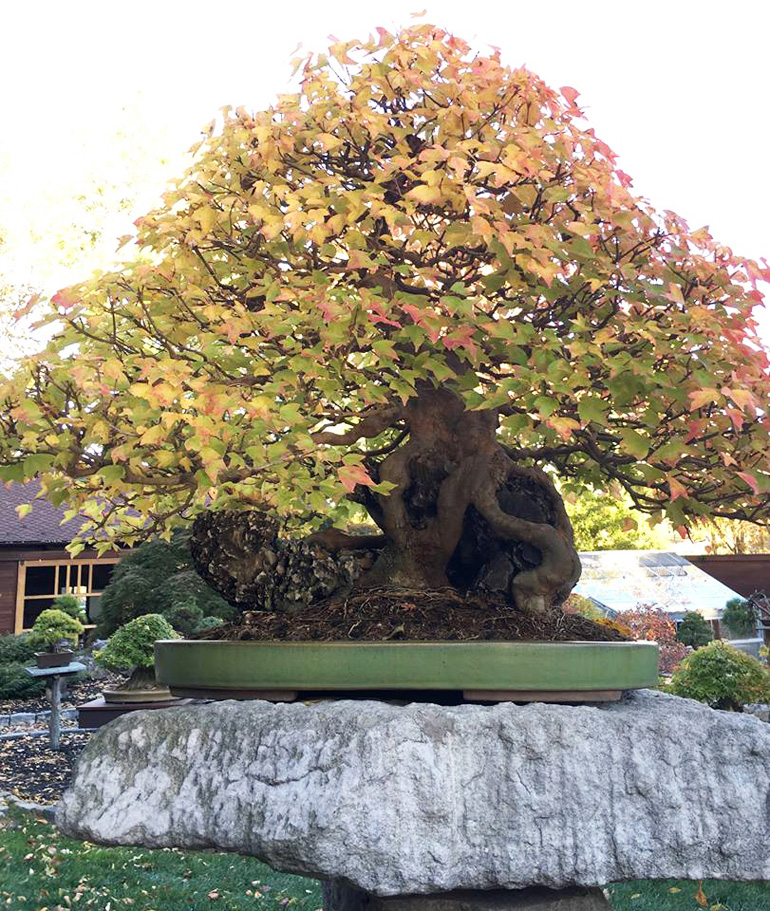
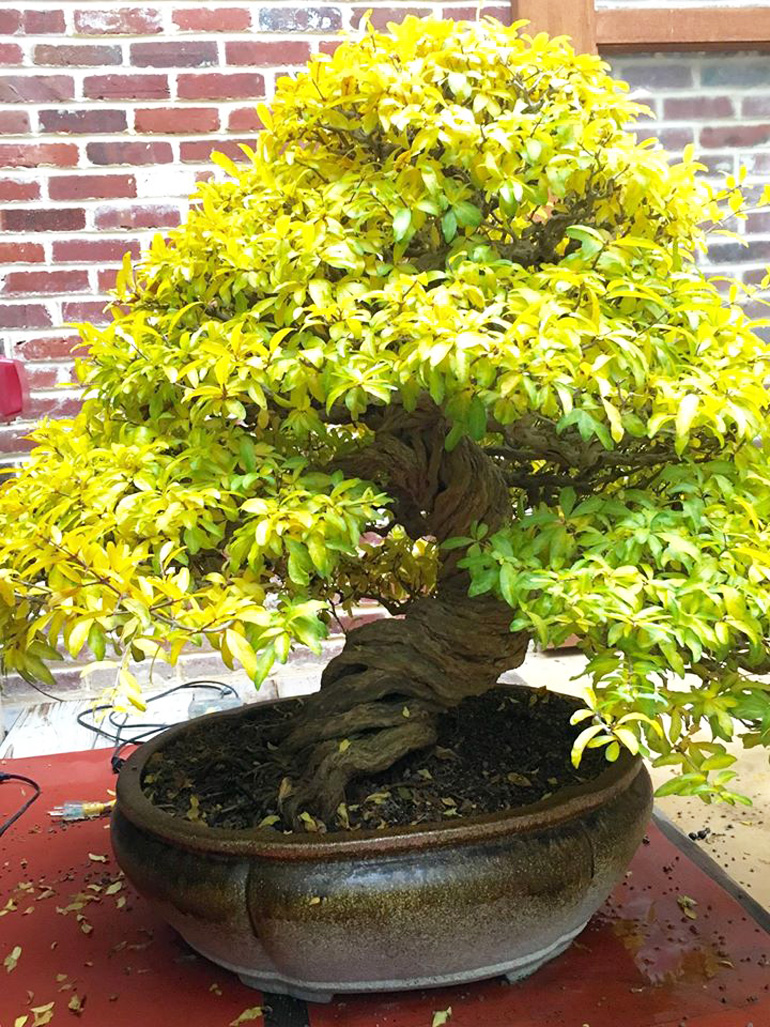


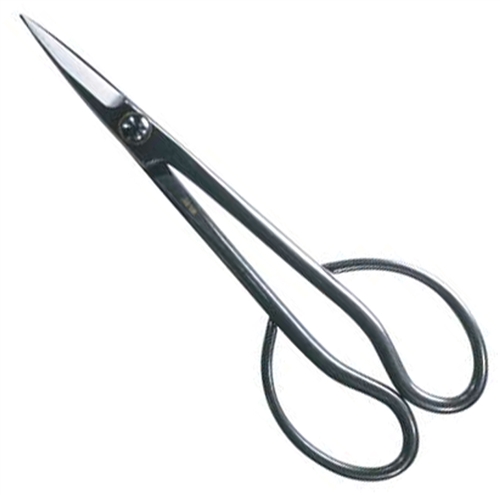
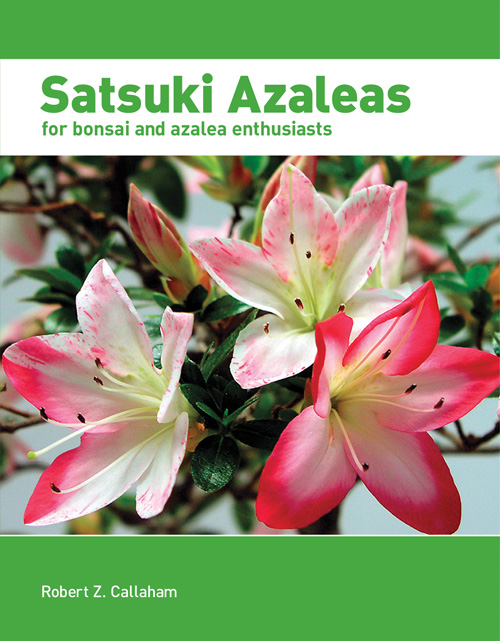
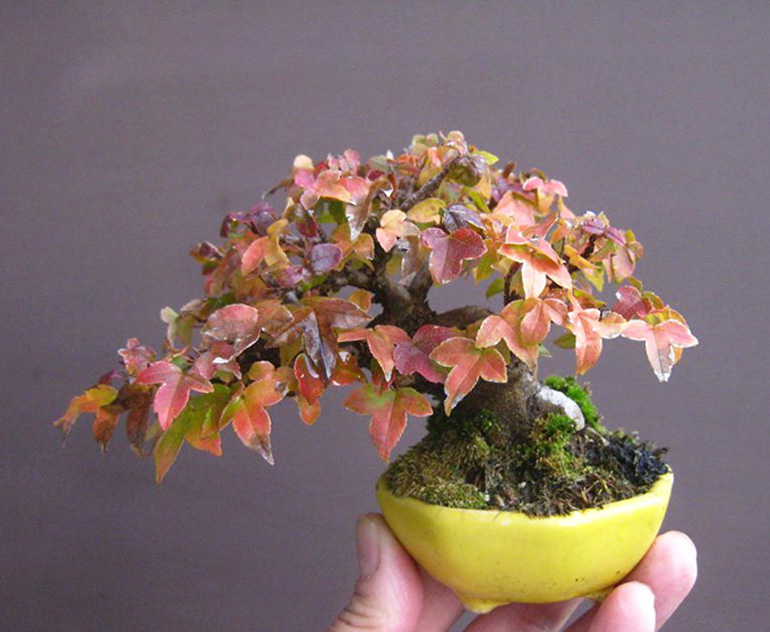 You don't see that many bright yellow pots. The glaze is expensive and hard to come by and the brilliance of the color can be overwhelming. But in this case the little tree holds its own. In fact, it's hard to imagine a better choice of pots to set off the the richly hued Trident maple leaves.
You don't see that many bright yellow pots. The glaze is expensive and hard to come by and the brilliance of the color can be overwhelming. But in this case the little tree holds its own. In fact, it's hard to imagine a better choice of pots to set off the the richly hued Trident maple leaves.